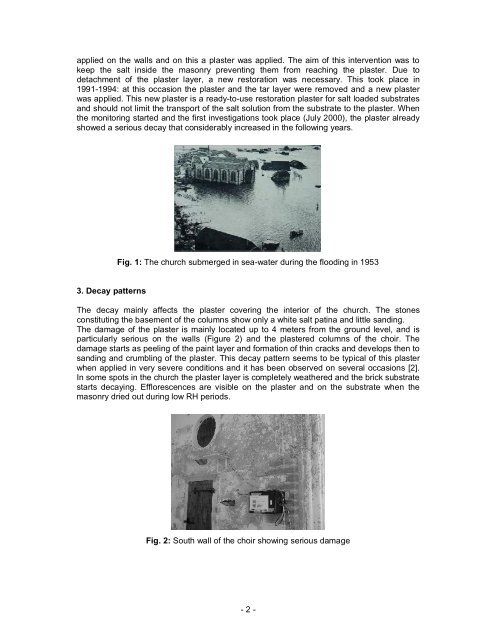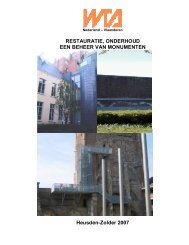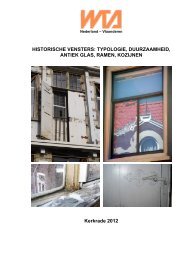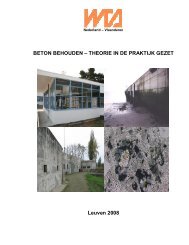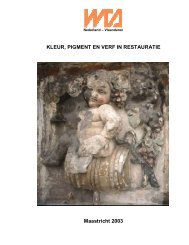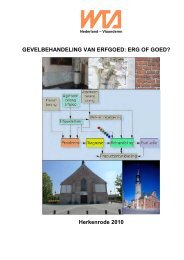MONUMENTEN EN WATER Diest 2005 - WTA
MONUMENTEN EN WATER Diest 2005 - WTA
MONUMENTEN EN WATER Diest 2005 - WTA
Create successful ePaper yourself
Turn your PDF publications into a flip-book with our unique Google optimized e-Paper software.
applied on the walls and on this a plaster was applied. The aim of this intervention was to<br />
keep the salt inside the masonry preventing them from reaching the plaster. Due to<br />
detachment of the plaster layer, a new restoration was necessary. This took place in<br />
1991-1994: at this occasion the plaster and the tar layer were removed and a new plaster<br />
was applied. This new plaster is a ready-to-use restoration plaster for salt loaded substrates<br />
and should not limit the transport of the salt solution from the substrate to the plaster. When<br />
the monitoring started and the first investigations took place (July 2000), the plaster already<br />
showed a serious decay that considerably increased in the following years.<br />
3. Decay patterns<br />
Fig. 1: The church submerged in sea-water during the flooding in 1953<br />
The decay mainly affects the plaster covering the interior of the church. The stones<br />
constituting the basement of the columns show only a white salt patina and little sanding.<br />
The damage of the plaster is mainly located up to 4 meters from the ground level, and is<br />
particularly serious on the walls (Figure 2) and the plastered columns of the choir. The<br />
damage starts as peeling of the paint layer and formation of thin cracks and develops then to<br />
sanding and crumbling of the plaster. This decay pattern seems to be typical of this plaster<br />
when applied in very severe conditions and it has been observed on several occasions [2].<br />
In some spots in the church the plaster layer is completely weathered and the brick substrate<br />
starts decaying. Efflorescences are visible on the plaster and on the substrate when the<br />
masonry dried out during low RH periods.<br />
Fig. 2: South wall of the choir showing serious damage<br />
- 2 -


